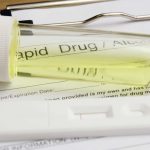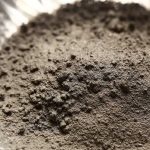- What Does Heroin Smell Like?
- What Does Heroin Taste Like?
- What Does Heroin Look Like?
- What Does It Feel Like To Use Heroin?
- Heroin Vs. Other Drugs
Originally produced and marketed by the Bayer company as a “safe” alternative to morphine, the potent opioid drug heroin has become notorious as an internationally produced and globally trafficked illicit drug of abuse.
But what does heroin actually smell, taste, and look like, and how can you know if a specific dose is actually heroin or something even more dangerous?
What Does Heroin Smell Like?
Pure heroin is said to have little odor of its own. However, because it is produced and cut with such a wide variety of different substances and transported in so many different ways and conditions, heroin often develops a scent that is sharp and acidic, similar to strong vinegar.
The lower the grade of heroin, the stronger the smell it produces. Black tar heroin reportedly has an acrid, burnt plastic or chemical odor.
What Does Heroin Taste Like?
Pure heroin is bitter. However, in practice heroin’s taste is determined almost entirely by the specific chemical products used in its production and the additives it is cut with before being sold.
Cutting refers to the act of adding in fillers in order to dilute and stretch the drug supply and increase profits for manufacturers and dealers.
Powdered heroin can taste like anything from sugar to flour, baking soda, powdered milk, or other more harmful or even toxic additive substances.
What Does Heroin Look Like?
Heroin is found in several different forms depending on where and how it is produced and cut. Common forms of heroin include:
White Powder Heroin
Pure heroin appears as a bright white powder, However, street heroin may appear off-white or take on any number of different colors depending on how it is processed and what it is cut with along the way.
Common white powder fillers cut into heroin supplies include:
- baking soda
- sugar
- cornstarch
- crushed painkillers
- talcum powder
- powdered milk
- cleaning products
- quinine
- caffeine
White powder heroin is often used through snorting or injection, though many of these additives may cause serious problems if introduced to the sinuses or bloodstream.
Brown Powder Heroin
Brown powder heroin is generally less refined and less pure than white powder heroin and looks and feels like sand with a lighter or darker tan or brown color.
Because it is less pure and dissolves less easily in water, brown powder heroin is often sold cheaper than white powder heroin and is more likely to be smoked than snorted or injected.
Black Tar Heroin
Black tar heroin looks very different and distinct when compared to powdered heroin, and often resembles brown or black lumps of roofing tar that may be tacky or sticky to the touch. It can also be sold as a dirty-looking, dark-colored liquid.
What Does It Feel Like To Use Heroin?
Unlike stimulant drugs like crack cocaine or methamphetamine, which increase feelings of energy while triggering euphoric pleasure, heroin use slows the central nervous system, sometimes causing a euphoric rush followed by prolonged feelings of calm, bliss, drowsiness, and security.
But these feelings are temporary and treacherous, as substance abuse may trigger drug dependence and addiction, reduce an individual’s ability to enjoy normal things, erode both physical and mental health, and increase the risk of overdose and other serious health issues.
Telling The Difference Between Heroin & Other Drugs
Unfortunately, there is no reliable way to tell the difference between heroin and other white powder drugs using your eyes, nose, or other senses. And there is danger in using drugs without knowing what they really are.
Fentanyl, an opioid painkiller more than fifty times more potent than heroin, is the most obvious example. China White, a name for a number of emerging fentanyl analogs, is another.
These increasingly potent opioid drugs can be produced cheaply and are often used to lace other drug supplies or are misleadingly sold as heroin or other less-potent opioid or opiate drugs.
In response, naloxone antidote kits are being widely distributed along with harm reduction test strips that can help individuals identify drug supplies that have been laced with fentanyl.
Heroin Addiction Treatment
Heroin addiction is a dangerous and harmful condition, but it can be treated through professional addiction treatment services, including medication-assisted treatment programs.
If you, a family member, or another loved one struggle with heroin abuse, please consider contacting Northeast Addictions Treatment Center today for more information.
Sources
Written by
Northeast Addition Editorial Team
©2024 Northeast Addition Center | All Rights Reserved
This page does not provide medical advice.






